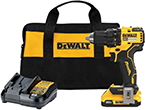Knowing the proper methods for finding wall studs can come in exceptionally handy in a variety of situations. The first scenario that you may need to find a wall stud is something as simple as hanging a picture. Secondly, finding wall studs would be helpful if you wanted to do some electrical work. A third reason that you may want to find some wall studs would be if you were going to be doing some renovations or remodeling. Finding wall studs
- Use the proper tools. Perhaps the simplest and easiest method for finding walls studs is to use a tool designed expressly for that purpose. Simply by turning a stud finder on, and running it over the wall. On most models when a stud is detected, you will be able to hear a solid tone and a small light bulb will light up.
- Look for clues. If you look closely on most walls, or in the right light and angle, you can find some slightly raised nail heads. These nail heads are indicators of a stud since they are what is anchoring the drywall to the studs themselves. That being said, this method can be fairly difficult if the wall was mudded properly prior to painting.
- Start at a window or corner. Two places that you are guaranteed to find a stud is at a window or corner of a wall. According to the building codes in most cities in the United States, you will find a stud spaced every 16 or 24 inches from these points. Simply measure out that far, and you should find the stud that you want.
- Look for an electrical outlet. Outlets and light switches, again according to code, are supposed to be mounted to the sides of a stud. This means that if you find one of these, then you have found a stud. Once again, if you measure 16 or 24 inches away from these places you will find another one.
- Knock on wood. Another indicator of where a stud might be is through the use of sound. Simply knock on the wall, roughly 16 or 24 inches away from a corner, window, or outlet, and see if you can get a solid sound. If you do, then you have found a stud. However, if it sounds like you are knocking on something hollow then you have only found some unsupported drywall.
Author Bio
Lee Wyatt
Contributor of numerous Tips.Net articles, Lee Wyatt is quickly becoming a regular "Jack of all trades." He is currently an independent contractor specializing in writing and editing. Contact him today for all of your writing and editing needs! Click here to contact. Learn more about Lee...
Perfect Pizza
Pizza is an enduring family favorite that can be purchased just about everywhere. While it is always easy to simply go ...
Discover More
Importance of Function in a Garden Design
If you are looking to design your own garden, then there are several things that you need to understand. One of those is ...
Discover More
Differences Between Nodal and Sectional Cuttings
Cutting is perhaps one of the most common method of plant propagation around. Typically two types of cuttings are the ...
Discover More
More Home Improvement Tips
Repairing Cracks in Plaster Walls
While plaster may be a very popular building material, it is also somewhat susceptible to cracks. If you don't take the ...
Discover More
Recognizing a Load-Bearing Wall
Recognizing a load-bearing wall isn't all that difficult, though it can save you a huge amount of money, and time. All ...
Discover More
Finding Studs in Walls
Sometimes it's not easy to locate studs since they are mostly concealed behind plaster and other parts of the wall. While ...
Discover More

Comments